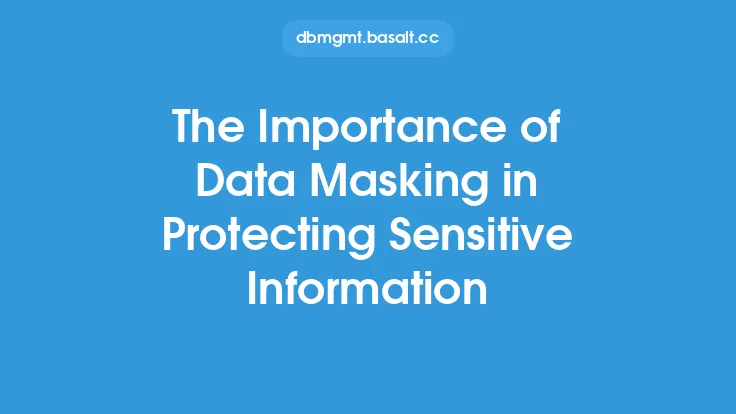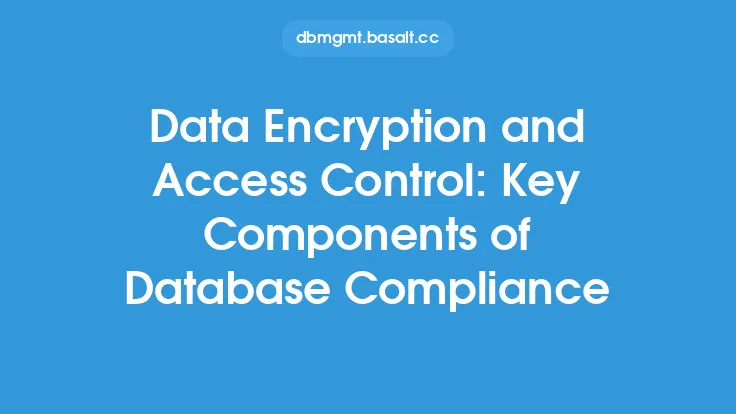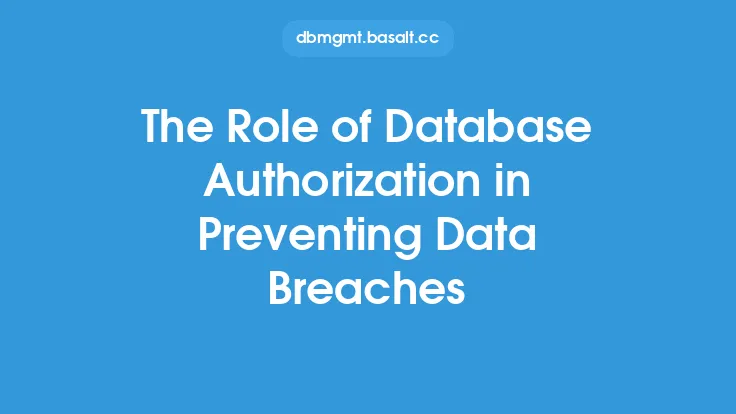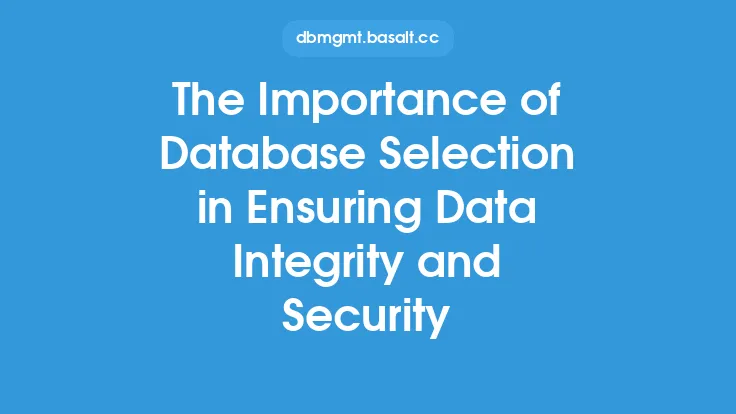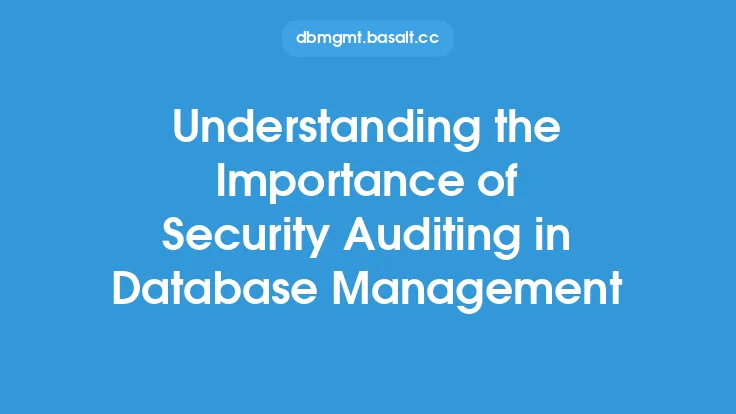In today's digital age, the protection of sensitive data has become a top priority for organizations of all sizes. With the increasing number of cyber threats and data breaches, it's essential to have robust security measures in place to safeguard sensitive information. One crucial aspect of database security is access control, which plays a vital role in protecting sensitive data from unauthorized access, theft, or damage. In this article, we'll delve into the importance of access control in protecting sensitive data and explore the various aspects of access control that organizations should consider.
Introduction to Access Control
Access control is a security mechanism that regulates who can access a database, what actions they can perform, and under what circumstances. It's a critical component of database security that ensures only authorized individuals or systems can access, modify, or delete sensitive data. Access control involves a set of rules, policies, and procedures that govern access to a database, including authentication, authorization, and auditing. By implementing access control, organizations can prevent unauthorized access, reduce the risk of data breaches, and protect sensitive information from malicious activities.
Benefits of Access Control
The benefits of access control in protecting sensitive data are numerous. Some of the most significant advantages include:
- Prevention of unauthorized access: Access control ensures that only authorized individuals or systems can access sensitive data, reducing the risk of data breaches and unauthorized modifications.
- Protection of sensitive information: By controlling access to sensitive data, organizations can prevent unauthorized individuals from accessing, modifying, or deleting sensitive information.
- Compliance with regulations: Access control helps organizations comply with regulatory requirements, such as GDPR, HIPAA, and PCI-DSS, which mandate the protection of sensitive data.
- Reduced risk of data breaches: Access control reduces the risk of data breaches by limiting access to sensitive data and preventing unauthorized individuals from accessing or modifying sensitive information.
- Improved data integrity: Access control ensures that sensitive data is accurate, complete, and consistent by preventing unauthorized modifications or deletions.
Types of Access Control
There are several types of access control, including:
- Discretionary Access Control (DAC): DAC is a type of access control that grants access to sensitive data based on the discretion of the owner or administrator.
- Mandatory Access Control (MAC): MAC is a type of access control that grants access to sensitive data based on a set of rules and policies that are mandatory for all users.
- Role-Based Access Control (RBAC): RBAC is a type of access control that grants access to sensitive data based on the role or position of the user within an organization.
- Attribute-Based Access Control (ABAC): ABAC is a type of access control that grants access to sensitive data based on a set of attributes or characteristics associated with the user, the data, or the environment.
Access Control Mechanisms
Access control mechanisms are the technical components that enforce access control policies and rules. Some common access control mechanisms include:
- Authentication: Authentication is the process of verifying the identity of a user or system before granting access to sensitive data.
- Authorization: Authorization is the process of determining what actions a user or system can perform on sensitive data.
- Auditing: Auditing is the process of monitoring and logging access to sensitive data to detect and respond to security incidents.
- Encryption: Encryption is the process of protecting sensitive data by converting it into an unreadable format that can only be accessed by authorized individuals or systems.
Best Practices for Implementing Access Control
Implementing access control requires careful planning, design, and implementation. Some best practices for implementing access control include:
- Conduct a risk assessment: Conduct a risk assessment to identify sensitive data and potential security threats.
- Develop an access control policy: Develop an access control policy that outlines the rules and procedures for accessing sensitive data.
- Implement access control mechanisms: Implement access control mechanisms, such as authentication, authorization, and auditing, to enforce access control policies.
- Monitor and review access control: Monitor and review access control regularly to ensure that it is effective and up-to-date.
Challenges and Limitations of Access Control
While access control is a critical component of database security, it's not without its challenges and limitations. Some of the challenges and limitations of access control include:
- Complexity: Access control can be complex to implement and manage, especially in large and distributed environments.
- Performance: Access control can impact database performance, especially if it's not optimized or configured correctly.
- Usability: Access control can impact usability, especially if it's too restrictive or cumbersome.
- Cost: Access control can be costly to implement and maintain, especially if it requires specialized hardware or software.
Conclusion
In conclusion, access control is a critical component of database security that plays a vital role in protecting sensitive data from unauthorized access, theft, or damage. By understanding the importance of access control, the benefits of access control, and the various types of access control, organizations can implement effective access control mechanisms to safeguard sensitive information. While access control has its challenges and limitations, it's essential to prioritize access control as part of a comprehensive database security strategy. By doing so, organizations can protect sensitive data, prevent data breaches, and maintain the trust and confidence of their customers, partners, and stakeholders.
